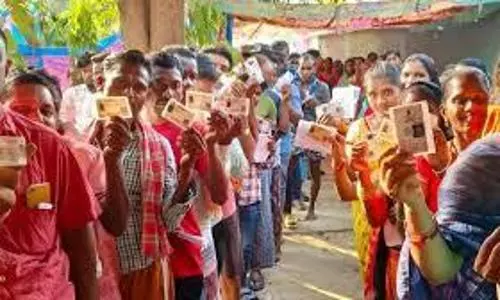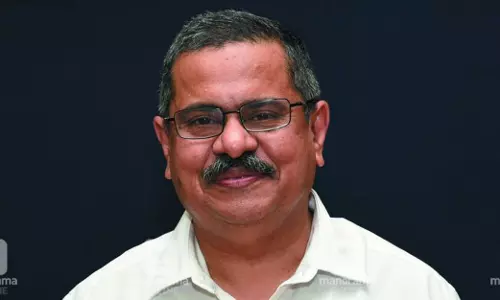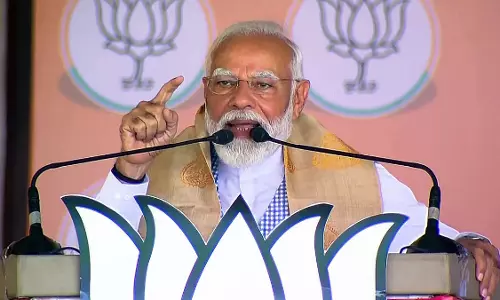
Many in, many out as the 'First Bell' rings
text_fieldsRepresentational image only
"As the lockdown created by Covid has forced the temporary closure of educational institutions, online learning and teaching are here with much fanfare. While the all-India model CBSE schools and institutions in better placed cities had already made some advances in offering the facility, for a state system like that of Kerala spread over the entire state, deep rural penetration - with many schools in remote villages - making e-learning effective has become a real challenge.
Although the state can boast of a host of facilities in terms of electricity, internet connectivity and state-provided smart class rooms, there are still schools and households in many a rural location where all or most of these are lacking. And that would mean leaving sizeable sections out of the loop, without benefiting from the enviably installed network of classes, equipment and connections facilitated by the Kerala Infrastructure and Technical for Education (KITE) and its Victers TV channel.
When the classes took off on Monday, 1st June accompanied by as much publicity as enthusiasm among pupils, the glaring disparities between the connected and the unconnected - for all the gap filling achieved by the scheme - jutted out as signs of a new digital divide that is feared to be in the making. The very essence of the much-made-of 'Kerala model' with the public sector playing the role of an equality provider and quality leader, it may turn out to be a non-starter for the Kerala model when such gaps remain or get more pronounced.
The e-learning programme presupposes possession of or access to television with cable conenction, laptop, tab or mobile phone, broadband internet connection and power supply with least interruption. But there is large percentage of students who do not have them.
As an example, a report cites that in Ernakulam district alone over 13,000 students are without access to smart phone or television. The situation in other districts is not likely to be much different. Overall, the students of classes from 1 to 12 who are so deprived form about 2.5 to 3 lakh across the state, as revealed by Samagra Shiksha, Kerala, a body under the General Education Department.
That said, the televised programmes for this week are designed to be a trial. Besides allowing time to get used to the mode, it is expected to locate deficiencies in the facilities and fix them. Even at the time of launching, the government, alive to absence of pre-requisites in several locations, had envisaged arranging common venues for clusters of student communities to come together and attend classes through common television or computer in locations to be arranged by people's representatives, local governments or voluntary bodies close to homes of such students.
Ther current exercise is seen as an alternative for no learning at all, at the same familiarising students with modern methods of teaching. One example: with classes designed for each level lasting just half an hour a day, it is easy to figure out the quantitative deficit against a normal classroom duration of about 25 hours per week. And even if it is planned for longer durations, channel duration and bandwidth constraints will pose hurdles.
Even as there is no escape from the trend and necessity of online classes, there is the wide realisation that online learning is no substitute for campus learning with brick and mortar infrastructure which provides abundance of opportunities of social and physical interactions besides the face-to-face teacher-student experience. Therefore, even after creating both the mind-set and the infrastructure for e-learning, an ambience has to be created in which the teachers get the right frame of mind and technique to delilver the content and the student to imbibe it through the new medium.
While such developments are in the offing, and with the world of cyber-learning ever so expanding, what is planned and currently executed in Kerala is admittedly for a temporary phase during lockdown. It may lead to greater, i.e. longer utilisation of the concept in future, either for core learning or additional learning, but will not amount to substitute classroom and campus learning entirely.
Still the gaps feared to be left by 'First Bell' initiative between the better off and the less privileged sections, may lead to the latter lagging behind with a subsequent snowballing effect in curriculum achievements. And for this, the longer the lockdown lasts and e-learning mode persists, the worse the possible result.
All said and done, the ongoing e-learning experiment will do good for engaging the children meaningfully, offering some learning rather than none at all, prepare a student-teacher combine for utilisation of internet-enabled instruction in future. It can further motivate students for wider horizons and greater achievements. But it is hardly seen as a substitute for formal classroom learning and that great teacher of all – the campus.























